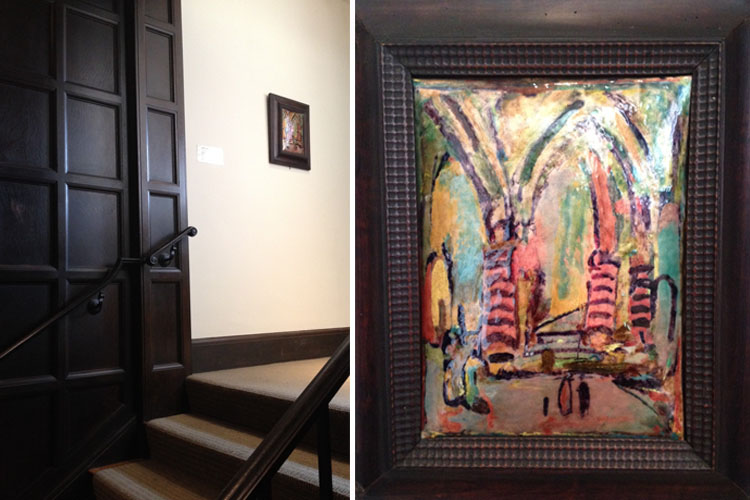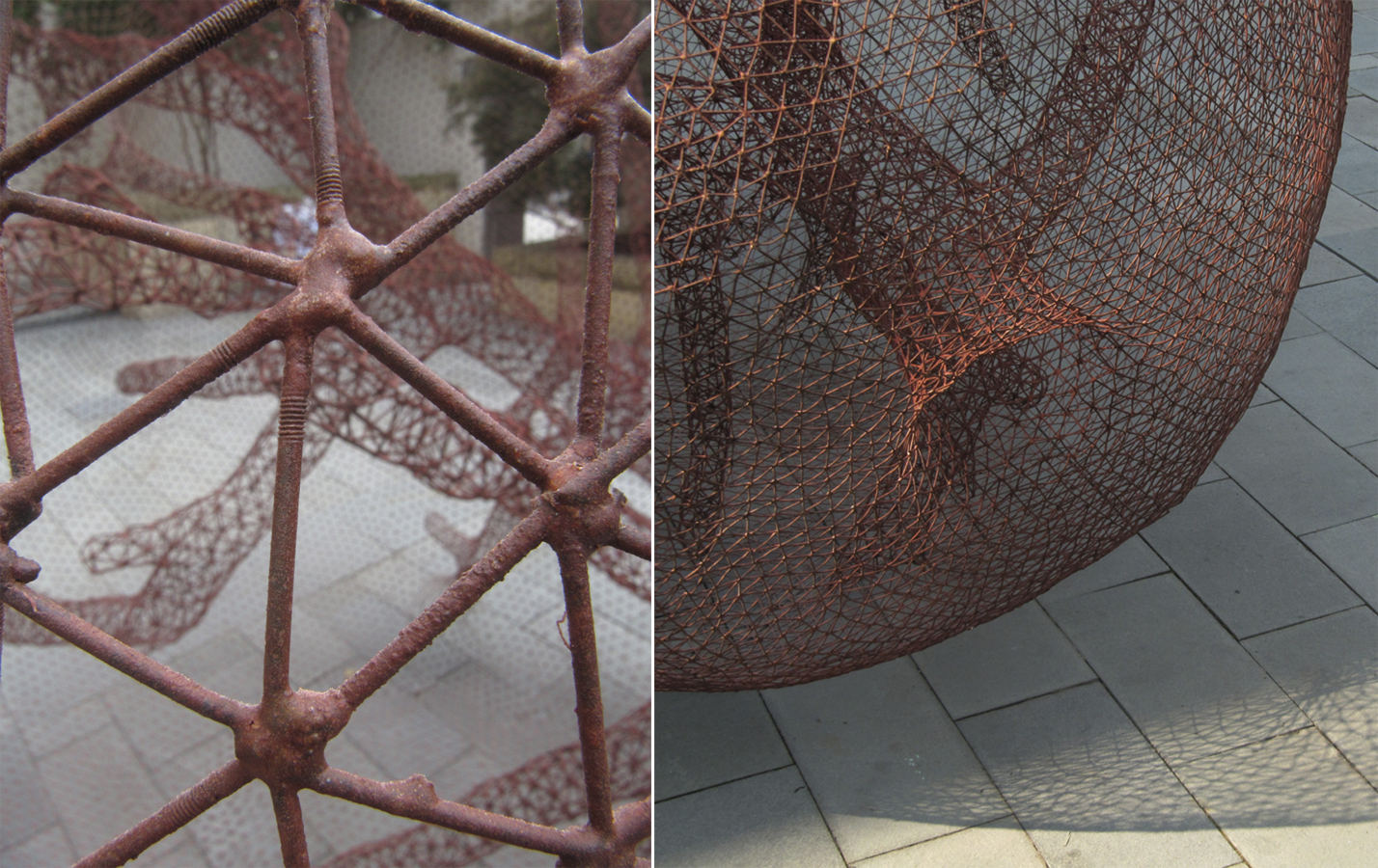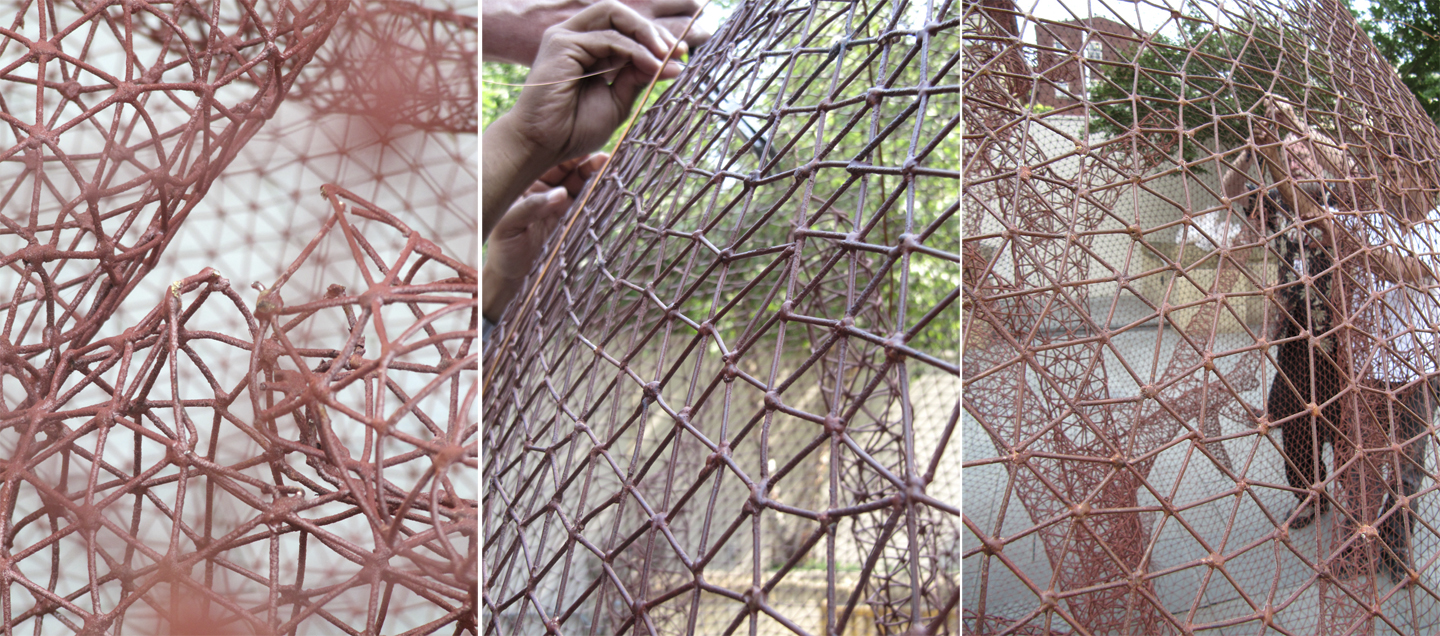
(Left) Georges Rouault’s painting Church Interior hangs unassumingly at the top of the stairs leading to the Music Room (Right) Georges Rouault, Church Interior, 1952, Enamel on copper, overall: 11 1/4 x 8 1/4 in. Bequest of Seymour and Janet Rubin, 2003
On my way through the galleries last week, I was stopped by a painting at the top of the stairs leading to the Music Room. There, hanging unassumingly on a wall all to itself, is George Rouault’s Church Interior. What caught me was the strange texture and shape of this otherwise fairly standard painting—the work seems to bubble out from its frame like an expanding balloon. Before looking at the label, I toyed with and quickly discarded a list of possible materials: Glass? No, too thick. Wood? Too smooth a curve. Plastic? Too undulating a surface.
Finishing my game, I gave in and looked to the placard for the answer: enamel on copper! I racked my brain for other examples of works on copper, but couldn’t come up with any. Naturally, my next step was a search of the Phillips’s collection for similar works and then, finding none, of the world at large. It turns out that copper had something of a heyday in the 16th and 17th centuries as an artistic canvas, of interest to El Greco, Rembrandt, and a slew of others.
Amy Wike, Marketing Manager


